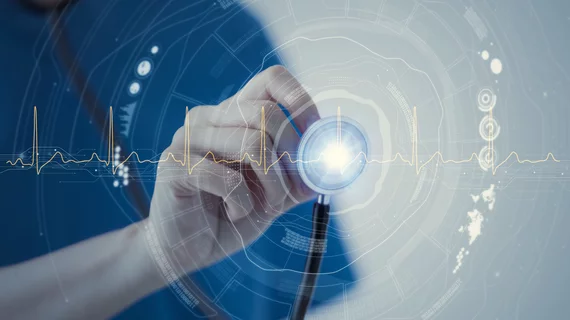EHR a key contributing factor to diagnostic errors in radiology, legal claims analysis finds
The electronic health record appears to have been a contributing factor in a measurable number of diagnostic errors in radiology, according to a small study published Friday in JAMA Network Open [1].
EHRs are a vital tool in medicine, but challenges such as software malfunctions, interoperability roadblocks and usability issues can lead to patient harm, previous studies have found. Researchers recently sought to better understand the connection between medical mistakes and health IT, analyzing claims from a malpractice insurance database.
They found a clear connection, with the EHR considered a potential contributor to medical errors in about 61% of claims across all specialties. Of the small sample of 122 such cases, 20.5% (or 25/122) of these EHR-related errors occurred in radiology, experts concluded.
“These results highlight the importance of the continued work needed to optimize EHR design, interoperability, training and safety surveillance to reduce diagnostic errors,” corresponding author Jeffrey A. Gold, MD, an informatics expert with Oregon Health & Science University, and colleagues concluded. “Additionally, to inform improvement efforts, more granular reporting taxonomies are needed to better understand the specific EHR issues that may be contributing to diagnostic errors.”
For their research letter, Gold et al. retrieved legal claims from the CRICO database maintained by Harvard University and representing more than 550 healthcare facilities. They selected ambulatory care claims that were closed between 2015-2021. Two physicians reviewed each instance to determine the presence of a diagnostic error, along with when in the care process it occurred, the type of error and the outcome. Diagnostic errors were defined as “inaccurately determining which disease or condition explains a patient's signs or symptoms.”
The query produced 199 claims coded as being diagnosis related, having an EHR-contributing factor and confirmed by the two expert physician reviewers. Electronic health records had no impact in 18.5% of those cases, 14% were undetermined, and 61% (or 122) did have an EHR influence. About 17% of those (21 errors) occurred in a radiology setting and nearly 13% (30) were related to a radiology service.
Of the 122 confirmed by reviewers, nearly 92% occurred in the testing stage, 21% in the assessment stage, and 2.5% at referral. Some of the most common error types included execution errors (51%), ordering mistakes (46%), and incorrect interpretations (46%). About 7% were labeled as documentation errors and 6% more involved miscommunications. And as far as outcomes, 71% resulted in missed or delayed diagnoses, 27% were the wrong determination, and 2% were undetermined. Across the sample, 75% of claims had a judgment or settlement noted.
“The findings of this qualitative study illustrate the central role of the EHR for supporting the diagnostic process, and the potential for EHR issues such as suboptimal design or clinician use to facilitate diagnostic errors,” the authors concluded.
The study did not offer a breakdown on error types and outcomes specific to radiology. In an email, Gold noted that "a large fraction of the cases" involved imaging, with chest scans and mammography the most common exams. The analysis has several limitations, including not accounting for EHR adoption and optimizations over time and an inability to incorporate errors that did not result in a legal claim.
Read more from JAMA below.

